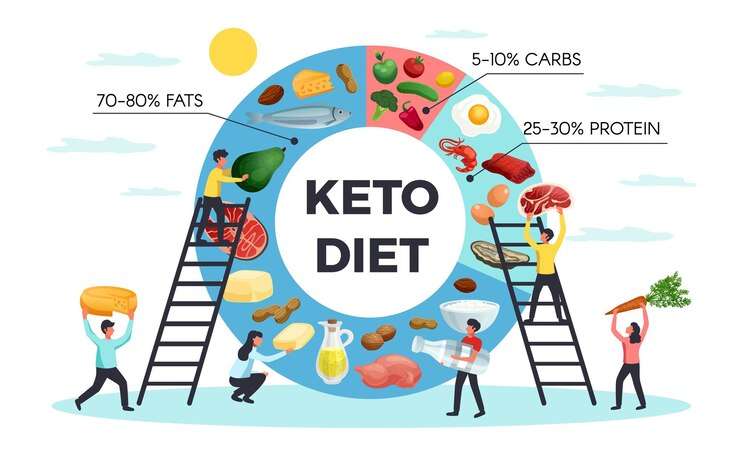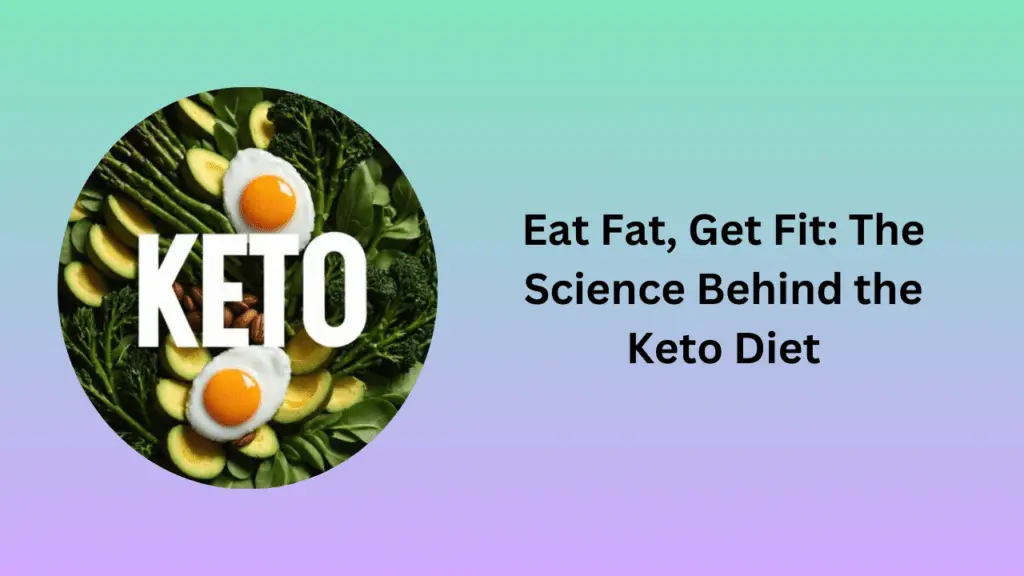Table of Contents
ToggleIntroduction
Have you ever wondered if eating fat could help you lose weight? It might sound strange, but the ketogenic (keto) diet does just that. This diet is low in carbs and high in fat, which is different from most weight-loss plans. In this article, we’ll explain how the keto diet works, its benefits, possible drawbacks, and how to get started.
What is the Keto Diet?
The ketogenic diet is a dietary approach that typically involves reducing carbohydrate intake to about 5-10% of total calories while increasing fat to about 70-80%. The goal? To transition into a metabolic state referred to as ketosis.
- The Ultimate Keto Meal Plan is a customizable meal planning service that provides you with a personalized plan.
- Customized meal plans based on individual needs and goals.
- A comprehensive grocery list for each week.
- Delicious and nutritious keto-friendly recipes.
How Does Ketosis Work?

When your carbohydrate intake is drastically limited, your body’s preferred source of fuel, glucose, becomes scarce. As a result, the liver initiates the breakdown of fat into ketones, which are then utilized as a fresh source of energy. Here are a few interesting points about ketosis:
- Fat Burning: In ketosis, your body becomes extremely efficient in burning fat for energy.
- Appetite Regulation: Ketones can help suppress hunger hormones, potentially making it easier to stick to the diet.
- Stable Energy Levels: Many followers of the keto diet report experiencing stable energy levels throughout the day, avoiding the energy crashes often associated with high-carb diets.
” By flipping the script on conventional dieting wisdom, the keto diet shows that eating fat can be your friend, not your enemy. “
Benefits of the Keto Diet

The keto diet is celebrated for several health benefits, some of which go beyond weight loss.
Weight Loss and Body Composition
- Rapid Initial Weight Loss: One of the first things many experience on a keto diet is weight loss, often attributed to loss of water weight and fat.
- Reduced Body Fat Percentage: Studies show that individuals may reduce their body fat percentage more effectively on a ketogenic diet than on low-fat diets.
Cognitive Benefits
Recent research indicates benefits in mental clarity and focus when following a ketogenic diet.
- Brain Fuel: Ketones provide an efficient energy source for the brain, possibly leading to improved cognitive functioning.
- Potential Neurological Benefits: Some studies suggest that a keto diet may support the treatment of neurological disorders like epilepsy and Alzheimer’s disease.
Improved Blood Sugar Control
Individuals with insulin resistance or type 2 diabetes may also benefit from the ketogenic diet.
- Lower Blood Sugar Levels: Since the diet eliminates most carbohydrate sources, there is less fluctuation in blood sugar levels.
- Reduced Insulin Sensitivity: Following this diet can lead to improved insulin sensitivity over time.
Potential Drawbacks of the Keto Diet

While the keto diet has its advantages, it’s not without potential downsides.
Nutritional Deficiencies
The keto diet’s restrictive nature can lead to a lack of essential nutrients.
- Limited Food Choices: Many fruits, vegetables, and whole grains are restricted on the keto diet.
- Micronutrient Gaps: Vitamins and minerals like potassium, magnesium, and certain B vitamins may be lacking.
Keto Flu
When a person transitions to ketosis, they may experience a group of symptoms called the keto flu.
- Symptoms: Fatigue, headaches, irritability, and muscle cramps.
- Duration: These symptoms typically last for a few days to a week as the body adjusts.
Getting Started with the Keto Diet

If you’re intrigued by the promise of the keto diet, here’s how to kickstart your journey.
Meal Planning
- Focus on Whole Foods: Prioritize high-quality fats like avocados, nuts, seeds, and healthy oils.
- Incorporate Low-Carb Vegetables: Leafy greens, broccoli, and cauliflower provide fiber and essential vitamins without spiking carb intake.
Monitor Your Macros
By tracking your macronutrient intake, you can keep your diet on track.
- Smartphone Apps: Use apps like MyFitnessPal or Cronometer to log your food and ensure you’re meeting your targets.
- Understand Your Limits: Make sure to aim for around 70-80% fats, 5-10% carbohydrates, and 15-25% protein.
Hydration and Electrolyte Balance
As your body shifts to burning fat, it’s essential to stay hydrated and maintain electrolyte balance.
- Drink Plenty of Water: Aim to consume ample water daily.
- Consider Electrolyte Supplements: Sodium, potassium, and magnesium supplements can alleviate potential deficiencies.
Conclusion
The keto diet has demonstrated that consuming fat can support weight loss and enhance health, challenging traditional dieting norms. However, it’s essential to consider both the benefits and potential drawbacks before diving in. Every dietary approach has pros and cons, and the best path forward often requires consulting with a healthcare provider.
Do you have the courage to reconsider your relationship with fat? Whether you want to lose weight or feel more energized, the ketogenic diet may offer the solution you’ve been searching for.
Feel free to leave your thoughts and experiences with the keto diet in the comments below, or check out resources from studies and dietitian advice to inform your journey further!

